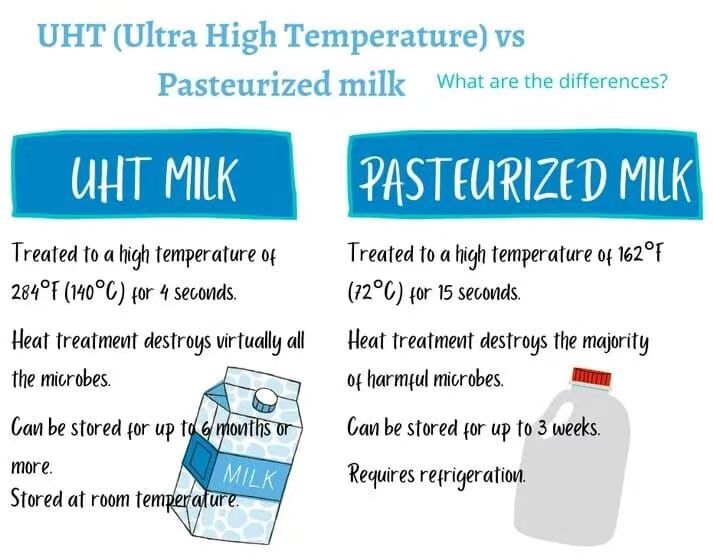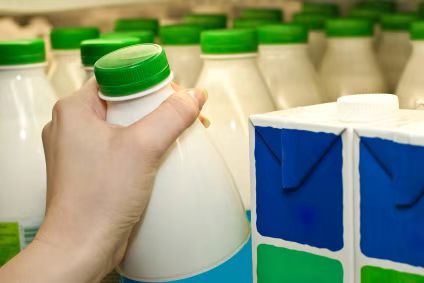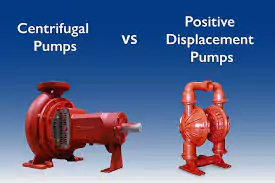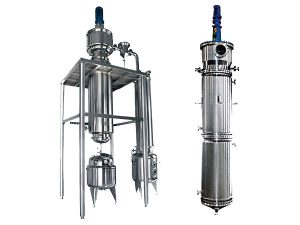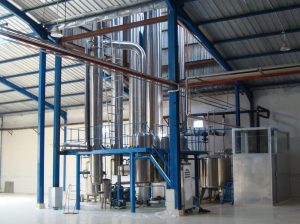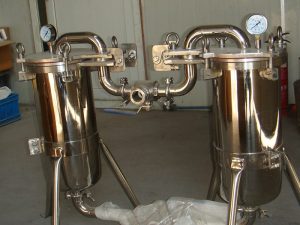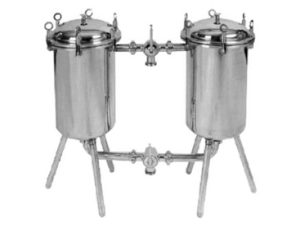In modern dairy processing, selecting the right pump is not just a technical choice—it’s a business-critical decision that impacts product quality, operational efficiency, and overall profitability. Pumps are the heart of every dairy plant, responsible for transferring milk, cream, yogurt, whey, and even cleaning solutions.
But when it comes to choosing between centrifugal pumps vs positive displacement pumps, many dairy equipment buyers struggle with the trade-offs. Each pump type has its strengths and limitations, and the wrong choice could mean increased maintenance costs, reduced product quality, or downtime in your production line.
In this blog, we’ll provide a detailed comparison of positive displacement pump vs centrifugal pumps, specifically tailored to dairy processing equipment manufacturers and buyers. By the end, you’ll know which pump type is best suited for your dairy plant—and why investing in the right technology is key to protecting your product and your bottom line.
Table of Contents
Toggle1. Understanding Pump Types in Dairy Processing
Centrifugal Pumps in Dairy Processing
Centrifugal pumps transfer energy from a motor to liquid through a rotating impeller, creating flow.
-
Typical Applications in Dairy:
-
Milk transfer between storage tanks
-
Water circulation in Cleaning-in-Place (CIP) systems
-
Cooling water in pasteurization lines
-
Boiler feed and general utility services
-
-
Key Advantages:
-
Handles large volumes of low-viscosity fluids (e.g., milk, whey, water)
-
Simple, compact design with few moving parts → low maintenance costs
-
Cost-effective and widely available in stainless steel for hygienic use
-
-
Limitations:
-
Performance drops significantly with viscous dairy products (cream, yogurt)
-
High-speed impeller may shear delicate products, affecting texture
-
📌 Best for: High-volume, low-viscosity, continuous-flow dairy applications.
Positive Displacement Pumps in Dairy Processing
Positive displacement (PD) pumps move fluid by trapping a fixed volume in a cavity and discharging it under pressure.
-
Types Used in Dairy:
-
Rotary PD Pumps: lobe, screw, gear, progressive cavity, peristaltic
-
Reciprocating PD Pumps: piston, diaphragm
-
-
Key Applications in Dairy:
-
Cream, yogurt, and other high-viscosity products
-
Handling solids (fruit pieces in yogurt, cheese curds)
-
Additive dosing (enzymes, flavors, probiotics)
-
Slurries and pastes in cheese and butter production
-
-
Key Advantages:
-
Constant flow regardless of pressure changes
-
Handles high-viscosity and shear-sensitive dairy products gently
-
Accurate dosing for recipes and formulations
-
Can pump liquids containing solids without damage
-
-
Limitations:
-
Higher upfront investment
-
Lower flow rates compared to centrifugal pumps
-
📌 Best for: High-viscosity, shear-sensitive, or precision dosing dairy applications.
2. Key Comparison: Centrifugal Pumps vs Positive Displacement Pumps
2-1. Flow & Pressure Behavior
-
Centrifugal Pumps:
-
Flow rate decreases as back pressure increases.
-
Best suited for large volumes of milk, whey, or water where the system pressure is stable.
-
Not ideal for precision applications.
-
-
Positive Displacement Pumps:
-
Provide a constant flow regardless of system pressure.
-
Crucial for dosing cultures, additives, or enzymes in dairy production.
-
Ensure steady delivery even when pipelines have pressure fluctuations.
-
| Factor | Centrifugal Pump | Positive Displacement Pump |
|---|---|---|
| Flow vs Pressure | Flow decreases as pressure rises | Constant flow at varying pressures |
| Dairy Example | Transferring milk between tanks | Precise dosing of probiotics in yogurt |
2-2. Viscosity Handling
-
Centrifugal Pumps:
-
Struggle with viscous dairy products such as cream, condensed milk, or yogurt.
-
Increased viscosity leads to friction losses, reducing efficiency and risking cavitation.
-
-
Positive Displacement Pumps:
-
Designed for high-viscosity fluids, ensuring smooth pumping of thick creams, cheese pastes, and butter.
-
Flow rate even increases with viscosity, making them ideal for premium dairy products.
-
2-3. Shear Sensitivity
-
Centrifugal Pumps:
-
High impeller speeds cause turbulence → product shearing.
-
May damage delicate structures (e.g., fruit pieces in yogurt, protein gels).
-
Risk of foaming in milk, affecting quality.
-
-
Positive Displacement Pumps:
-
Gentle, low-shear pumping ensures product integrity.
-
Preserve yogurt texture, prevent cream separation, and protect cheese curds.
-
Ideal for high-value dairy lines where product quality directly impacts revenue.
-
2-4. Efficiency & Operating Range
-
Centrifugal Pumps:
-
Operate efficiently only at a specific “best efficiency point.”
-
Off-curve operation leads to energy waste, cavitation, and potential damage.
-
Better for predictable, continuous processes (e.g., CIP cycles).
-
-
Positive Displacement Pumps:
-
Efficiency remains stable across varying pressures and viscosities.
-
Can operate at any point without damage → better ROI for variable dairy operations.
-
2-5. Maintenance & Longevity
-
Centrifugal Pumps:
-
Simple design, fewer moving parts, lower short-term maintenance costs.
-
Typically stainless steel construction for hygienic design in dairy plants.
-
Ideal for plants where pumps run continuously with thin liquids.
-
-
Positive Displacement Pumps:
-
More complex design → requires scheduled maintenance.
-
However, less product loss, fewer quality issues, and longer service life with viscous or sensitive dairy fluids.
-
Better long-term investment for premium product lines.
-
For milk, water, and CIP systems, centrifugal pumps remain the economical choice. But for yogurt, cream, cheese, or mixed dairy products, positive displacement pumps ensure better product integrity, lower wastage, and higher profitability.
3. Applications in Dairy Industry
Centrifugal Pumps – Dairy Use Cases
-
Milk collection from bulk tanks to processing lines
-
Transfer of whey in cheese-making plants
-
Cleaning-in-Place (CIP) operations with water and detergents
-
Cooling and circulation in pasteurization systems
-
Firefighting and washdown water in dairy facilities
✅ Why buyers choose them: Low cost, reliability, and ability to handle continuous, high-volume operations.
Positive Displacement Pumps – Dairy Use Cases
-
Yogurt and cream transfer without damaging texture
-
Cheese curd handling without crushing solids
-
Fruit-mixed dairy products (yogurt with pieces, flavored milk)
-
Accurate dosing of cultures, flavors, and additives
-
Viscous products like condensed milk, butter, and dairy pastes
✅ Why buyers choose them: Ability to handle delicate, thick, or solid-containing dairy products without product loss.
4. Choosing the Right Pump for Your Dairy Business
When comparing positive displacement pump vs centrifugal, the best choice depends on:
-
Product Characteristics
-
Low viscosity, high flow → Centrifugal
-
High viscosity, solids, sensitive structure → Positive Displacement
-
-
Operational Needs
-
Continuous transfer & utility fluids → Centrifugal
-
Accurate dosing, smooth handling, minimal shear → Positive Displacement
-
-
Total Cost of Ownership
-
Centrifugal pumps cost less upfront but may be unsuitable for viscous products → product loss risk
-
Positive displacement pumps cost more initially but ensure consistent quality and less waste in premium dairy lines
-
👉 Decision Guide for Dairy Buyers:
-
Need efficiency in milk or water transfer? → Choose centrifugal pumps.
-
Need reliable pumping for yogurt, cream, cheese curds, or mixed products? → Choose positive displacement pumps.
Conclusion
Choosing between centrifugal pumps vs positive displacement pumps is a decision that every dairy equipment buyer must carefully evaluate. While centrifugal pumps excel in high-flow, low-viscosity dairy operations, positive displacement pumps are essential for delicate, viscous, and high-value dairy products where texture and consistency matter.
💡 For Business buyers: The right pump not only ensures smooth production but also protects product quality, reduces downtime, and optimizes operating costs.
👉 Next Step: Contact our dairy equipment experts today to discuss your plant’s requirements. Whether you need centrifugal pumps for milk transfer or positive displacement pumps for yogurt and cream, we provide custom-engineered pump solutions that guarantee efficiency and quality.

